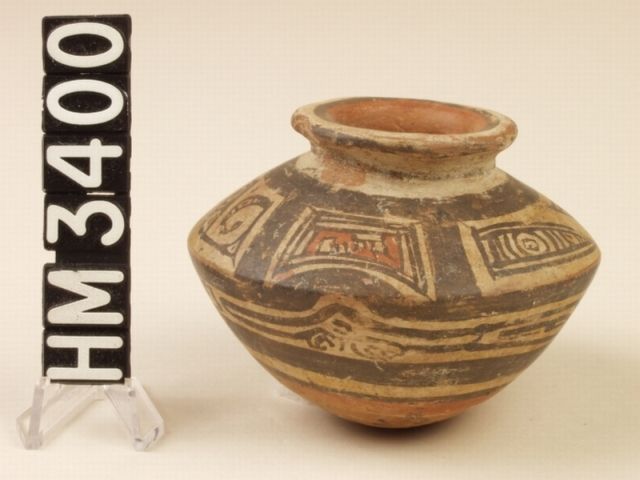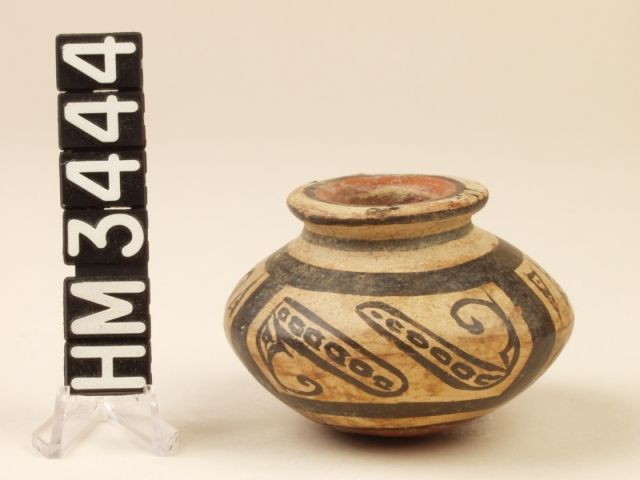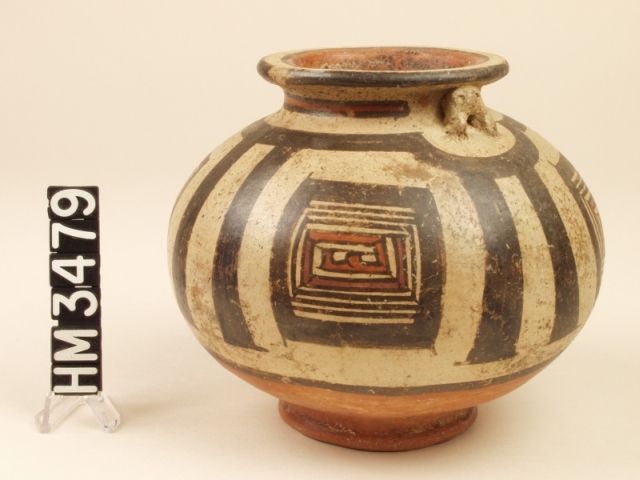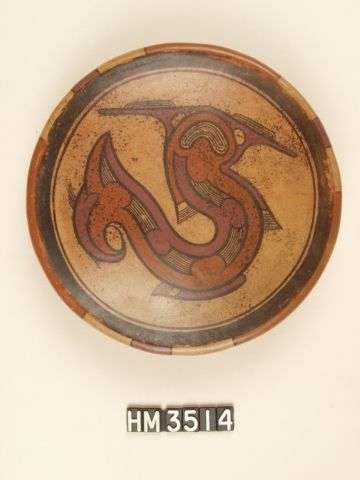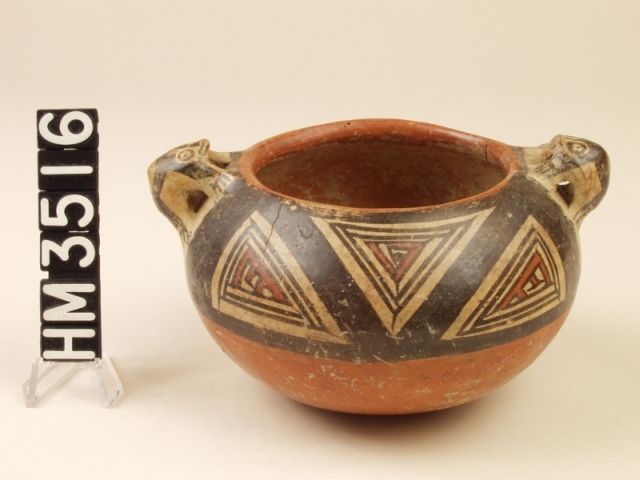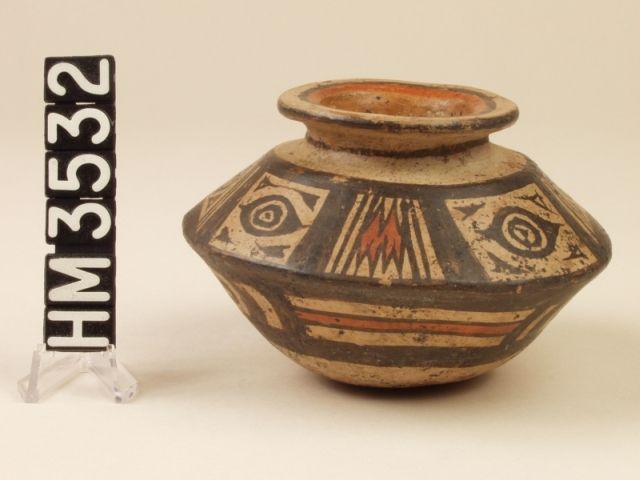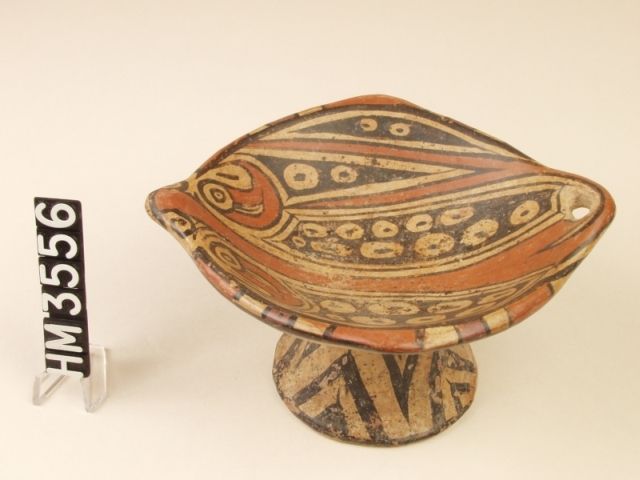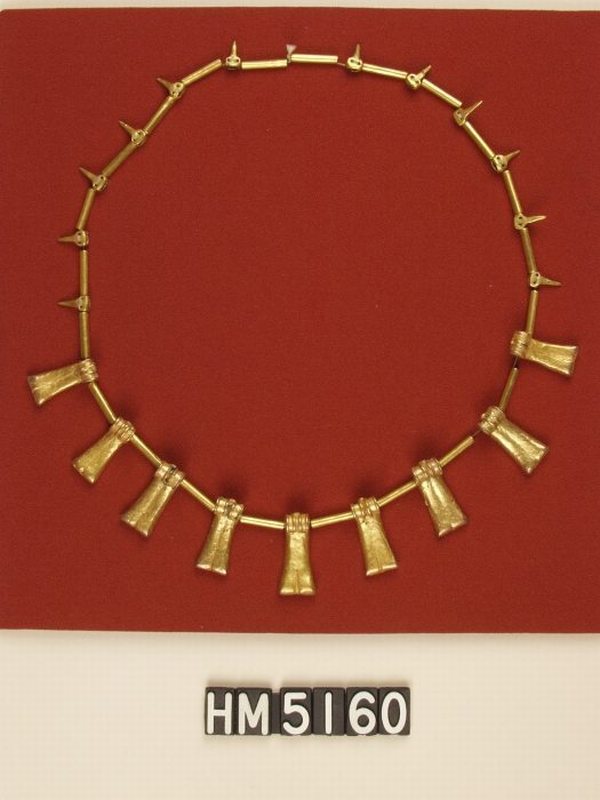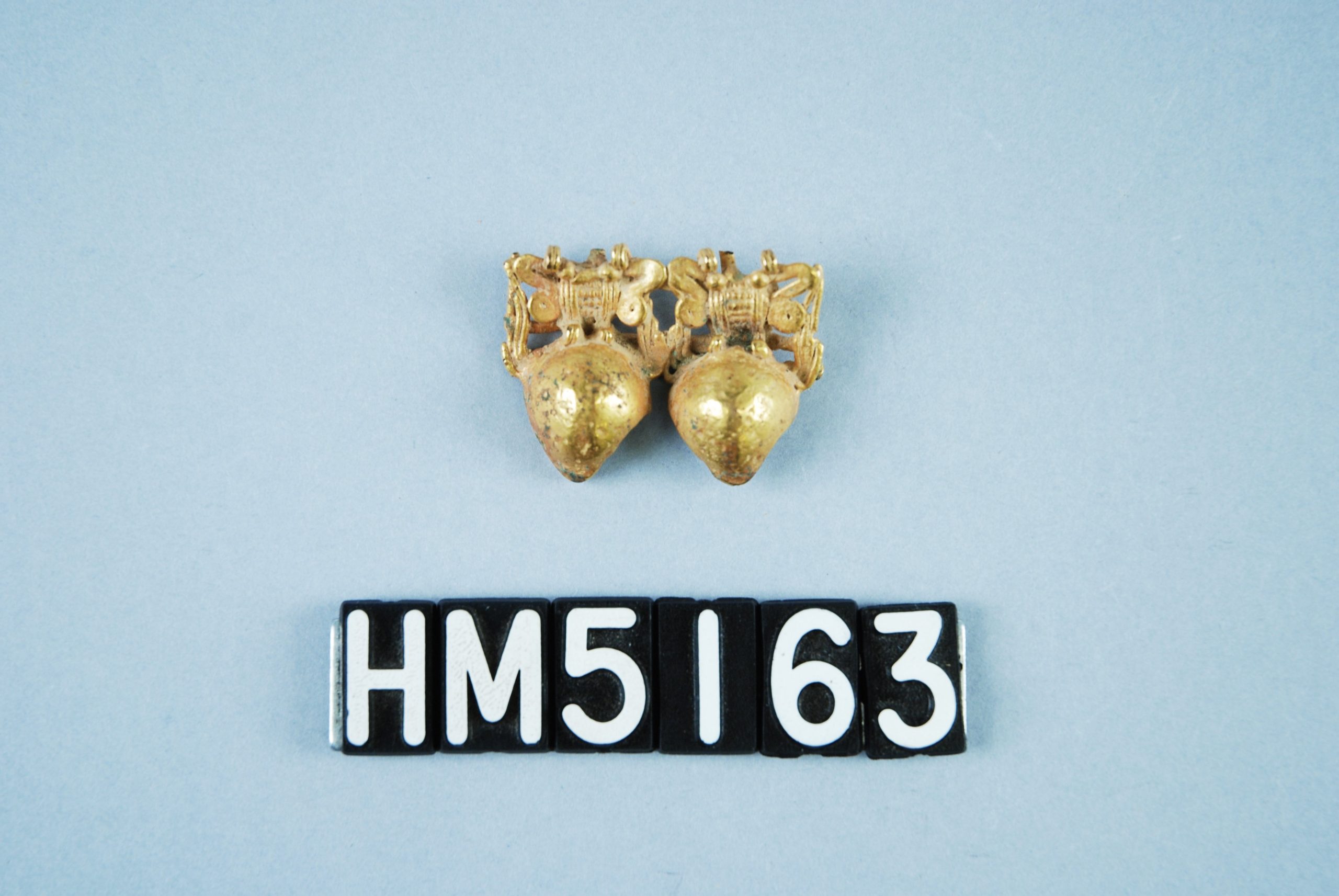Water-Related Creatures
Amphibians and certain aquatic reptiles, such as frogs and turtles, that move between land and water and frequent the liminal zone – the ocean shore or the rive bank – that connects these realms, are quintessential subjects for cosmological themes of origin and creation. Not surprisingly they are featured in Panamanian art, generally in effigy form. Frogs are cast in gold. Frogs and turtles are modeled in clay as effigies on the handle portions of bowls. Drawings of turtle heads and tails may be used in place of effigy forms on bowls to complete the design by depicting legs on the sides, the body of the bowl becoming the body of the animal. In Talamancan lore a frog plays a vital role in the emergence of the primordial Tree of Life from the body of a deceased pregnant woman, for the woman’s enlarged body exploded and formed the tree when the frog, which was positioned on her swollen abdomen to contain it, jumped off to chase an insect. Turtles were created from nests in the Tree when it fell and became the sea.
Large effigy jars of what seem to be sea turtles were also constructed by Panamanian ceramicists. The size of such jars may approximate what was needed to hold a clutch of sea turtle eggs. In pre-Columbian times, as to some extent still today, sea turtles frequented the waters of the Caribbean in great numbers. During the breeding season females crawled from the sea at night to excavate nests on the sandy beaches and lay clutches of eggs. The Kuna of Panama formerly believed that sea turtles were human beings punished by Great Father. The open carapace of the turtle effigy jar were capped by anthropomorphic “heads”, which bring to mind the ancient Maya depictions of the maize god, First Father, emerging from a cracked turtle carapace.
Other water-related animals, including various crustaceans, sharks, and sting-rays, also appear in central Panamanian art. What appear to be hammerhead sharks are often depicted with boa kennings running the length of the shark body and with mouth design comparable to that used for the iguana-boa. If the identification as hammerhead is indeed correct it suggests that the hammerhead’s uniquely elongated head lobes may have identified it as another sort of “crested” creature, comparable in that sense with the curly-crested curassow and the crested iguana. The association of boa kennings with this shark in Panamanian art suggests that the hammerhead with its “crest” may have been regarded as an “iguana-boa of the sea”.
On Panamanian ceramics rays are constructed in effigy form, frequently painted with spots indicating a possible zoological identity as eagle rays or round stingrays. The many species of stingray, which are commonly found buried in the sand on the bottom of coastal shallows, lagoons and bays or hidden in the silt at the bottom of fresh water streams, are renowned for the sharp, barbed, poisonous spines that erupt along their long thin tails and inflict very painful wounds if stepped upon. Stingrays and sharks may have been related, both in nature and perhaps in symbolic terms. Various sharks, including hammerheads, prey upon stingrays and it is not uncommon to find stingray spines embedded in the sharks’ jaws.
Stingray spines were widely used in ancient Mesoamerica in rituals in which the shedding of human blood was thought to nourish the gods and ancestors. Similar ritual was described for 17th century Guaymi of northern Panama. Stingray spines, thorns, flint blades and possibly shark teeth were used in these rituals as bloodletting perforators and scratchers. Numerous bundles of stingray spines have been found in Panamanian burials, along with shark teeth perforated for use in necklaces and bracelets. What may be shark teeth are rendered in gold necklaces, although it is possible that these forms are meant to be thorns.
